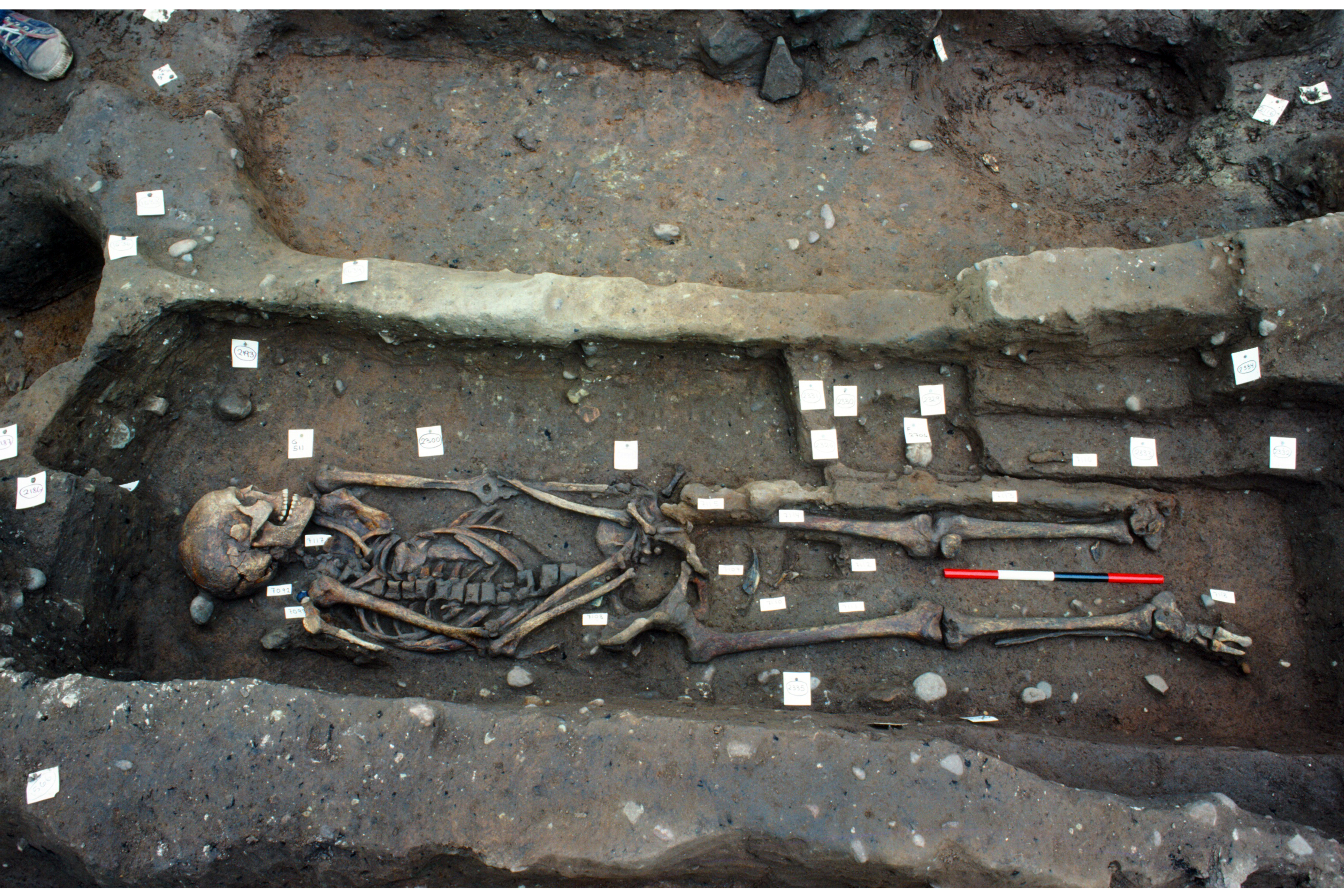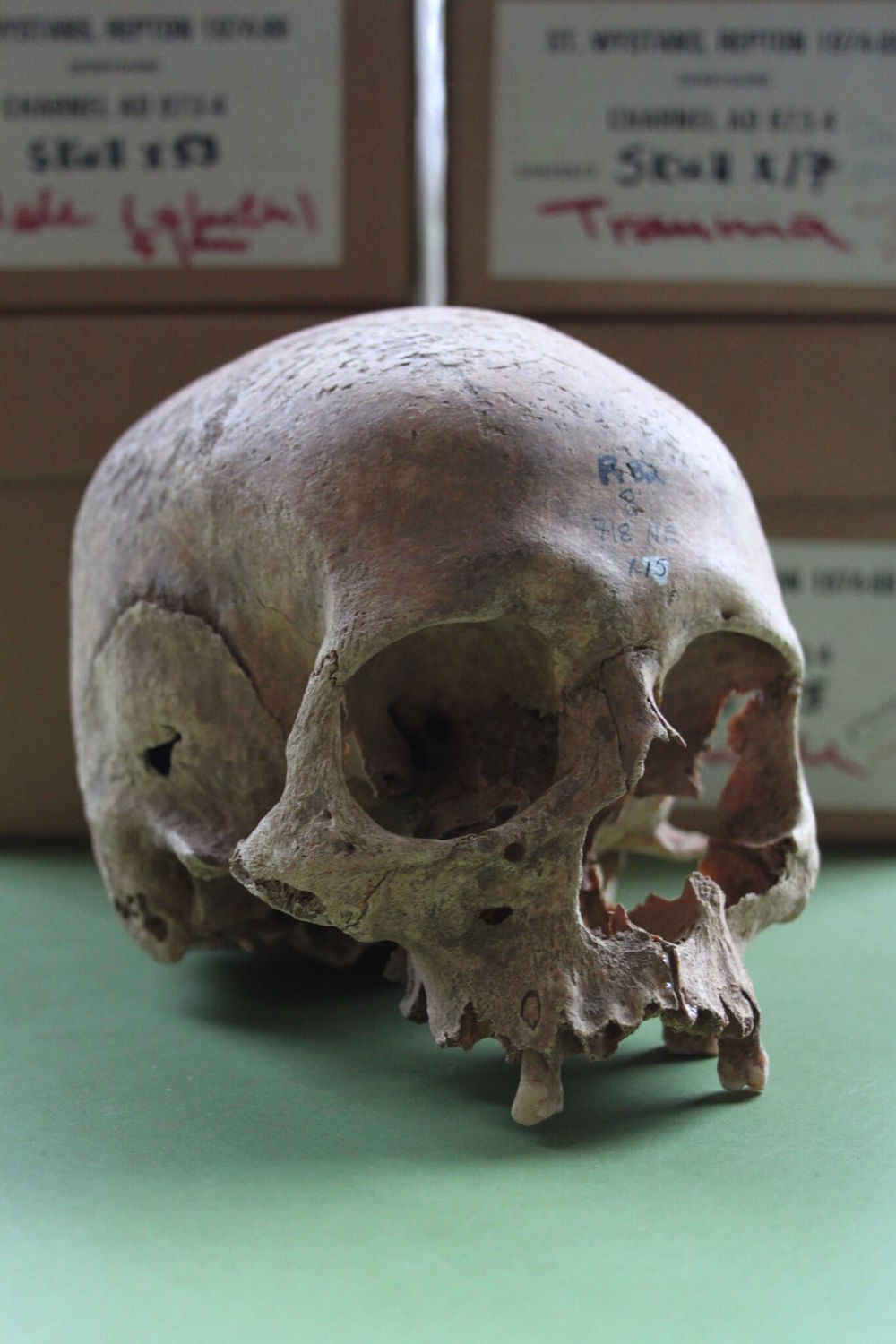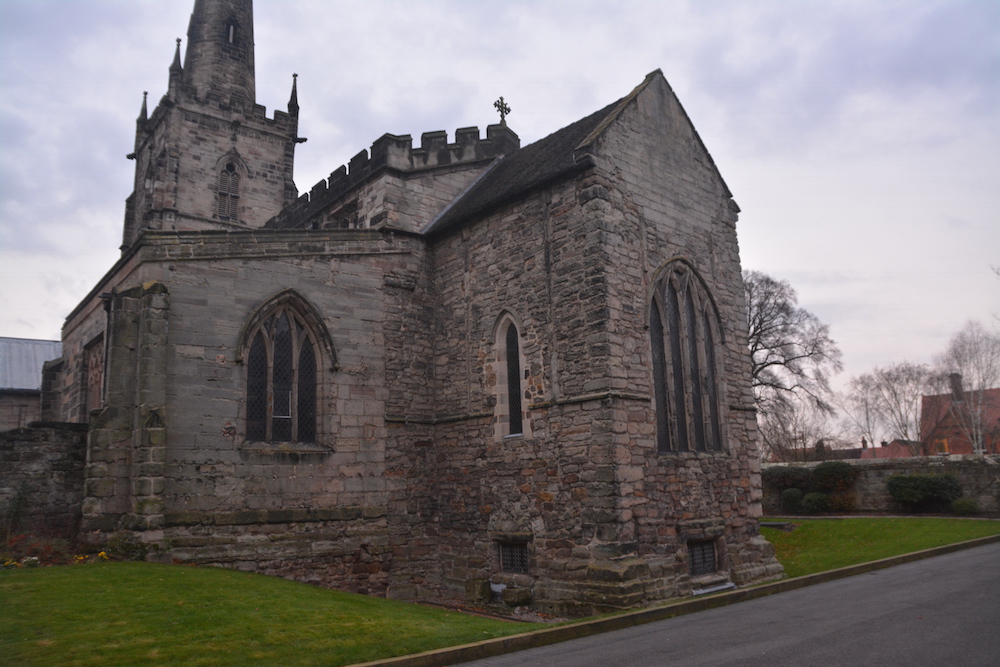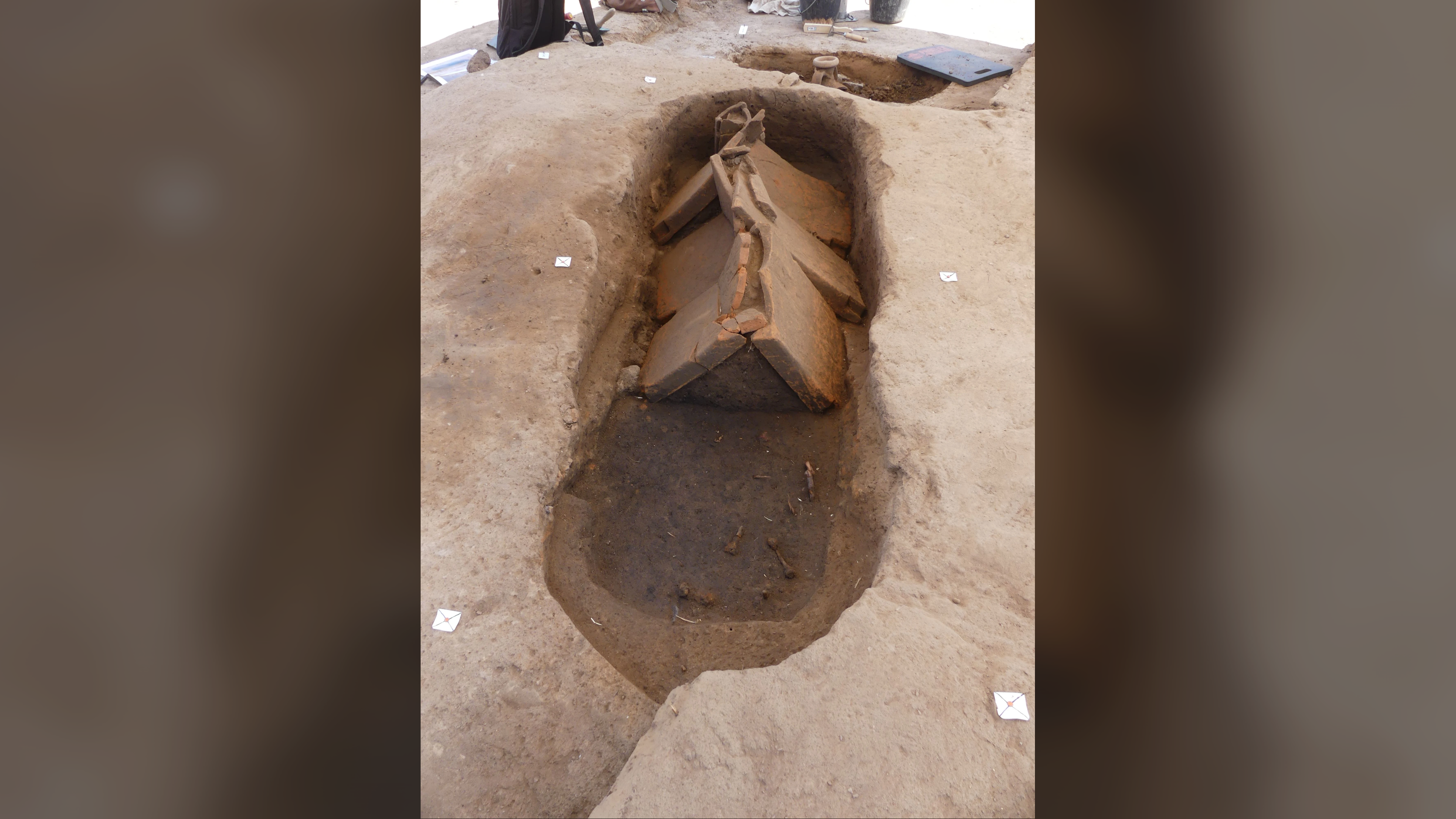Mystery Behind Mass Grave of Viking Warriors Finally Solved

Archaeologists could barely believe their luck when they uncovered a mass grave in the 1980s that appeared to be filled with the remains of more than 200 warriors from the Viking Great Army. But subsequent radiocarbon dating cast doubt on this idea, showing that some of the remains dated to hundreds of years before the Viking Age.
This finding puzzled researchers. It appeared that the grave, located in Repton, a parish in the district of Derbyshire, England, had been used before the Vikings invaded the British Isles, even though many of the bodies were buried with Scandinavian artifacts.
Now, researchers have finally gotten to the bottom of the mystery. The grave does, in fact, date to the Viking Age, according to a new study. Their research shows how the Vikings' dining choices — that is, chowing down on fish — caused the earlier radiocarbon-dating blunder. [Fierce Fighters: 7 Secrets of Viking Culture]
According to historical records, the Great Army spent the winter in Repton in A.D. 873-874 and attacked the king of Mercia, an Anglo-Saxon kingdom, sending him into exile. So, when archaeologists led by Martin Biddle and Birthe Kjølbye-Biddle excavated a mass grave at St. Wystan's Church in Repton in the 1980s, they expected to find Viking remains.
One room of the burial chamber contained at least 264 people — 20 percent of them female. Viking weapons and artifacts, including an ax, several knives and five silver pennies dated to between A.D. 872 and 875, were found among the remains of men, most of them ages 18 to 45. Several men had signs that they sustained violent injuries before dying, the researchers said.
All of these signs indicated that the grave belonged to the Great Army, but "although several samples were consistent with a ninth-century date, a number dated to the seventh and eighth centuries A.D., and thus seemed to belong to an earlier phase of activity," the researchers wrote in the study.
But now, new radiocarbon dating has revealed what archaeologists thought all along: the bodies in the grave date to the ninth century A.D., a date that corresponds with the Great Army's winter stay.
Get the world’s most fascinating discoveries delivered straight to your inbox.
"The previous radiocarbon dates from this site were all affected by something called marine reservoir effects, which is what made them seem too old," study lead researcher Cat Jarman, an archaeologist at the University of Bristol, said in a statement. "When we eat fish or other marine foods, we incorporate carbon into our bones that is much older than in terrestrial [land] foods. This confuses radiocarbon dates from archaeological bone material and we need to correct for it by estimating how much seafood each individual ate."
Thor's hammer
Jarman and her colleagues also dated a double grave at the site — one of the only graves with Viking weapons in it in England — to A.D. 873-886.
The older of the two men in the grave was buried with several artifacts, including a Thor's hammer pendant and a Viking sword. This man had several serious injuries, including a large cut on his left femur, or thigh bone. Curiously, a boar's tusk had been put between his legs. Perhaps because the injury had affected his penis or testicles, and the tusk symbolized this loss to help him prepare for the afterlife, the researchers said.
In another grave, four juveniles ages 8 to 18 were buried with a sheep jaw at their feet. Two of the boys had signs of traumatic injury. It's possible these boys were sacrificed to accompany the Viking dead, which Viking texts mention as a ritual, the researchers said. This grave was dated to A.D. 872-885, they noted. [Photos: 10th-Century Viking Tomb Unearthed in Denmark]
"The date of the Repton charnel bones is important because we know very little about the first Viking raiders that went on to become part of [a] considerable Scandinavian settlement of England," Jarman said. "Although these new radiocarbon dates don't prove that these were Viking army members, it now seems very likely."
The findings were published online today (Feb. 2) in the journal Antiquity.
Original article on Live Science.

Laura is the archaeology and Life's Little Mysteries editor at Live Science. She also reports on general science, including paleontology. Her work has appeared in The New York Times, Scholastic, Popular Science and Spectrum, a site on autism research. She has won multiple awards from the Society of Professional Journalists and the Washington Newspaper Publishers Association for her reporting at a weekly newspaper near Seattle. Laura holds a bachelor's degree in English literature and psychology from Washington University in St. Louis and a master's degree in science writing from NYU.


